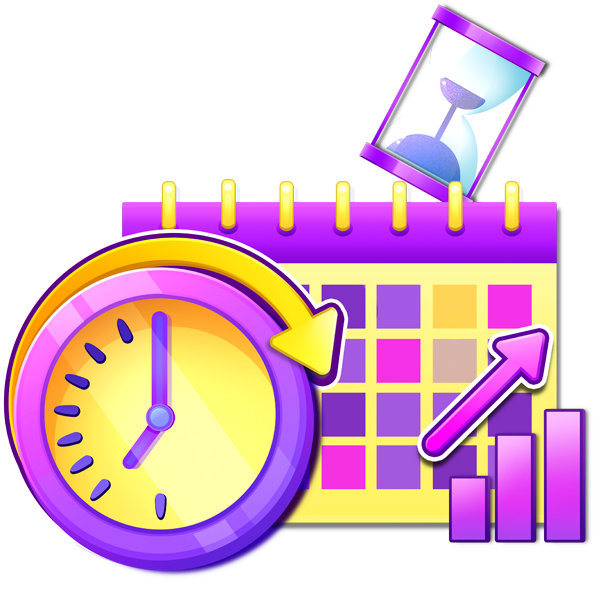The Secret to a Comfortable Retirement
You may think that retirement is something that only old people must worry about, but that’s not true. Retirement is when you stop working and live off your savings and other sources of income. It may seem like a long way off, but the sooner you start planning for it, the better. In fact, if you start saving and investing now, you can be a millionaire by the time you retire.
Sounds too good to be true? Well, it’s not. It’s all thanks to compound interest and various retirement benefits and accounts for you to take advantage of that will help you save for that day.
Compound Interest
When you invest your money, you earn interest. But the magic really happens when the interest you earn also starts earning interest. This is known as compounding.
For example, if you invest $1000 today at a 5% interest rate, then at the end of the year you will have $1050, which is $1000 plus $50 of interest. If you keep your money invested for another year at the same rate, you will have $1102.50 at the end of the second year, which is $1050 plus $52.50 of interest. Notice that you earned more interest in the second year than in the first year, because you earned interest on the interest. This is what compounding means, and it makes your money grow faster and faster over time, which is why starting early pays off.

What are the different sources of retirement income and how can you maximize them?
Compound interest is not the only factor that affects your retirement income. There are also different sources of income that you can rely on when you retire, and each one has its own advantages and disadvantages. The most common types of retirement income sources are defined contribution plans, defined benefit plans, Social Security, and IRAs.
Defined contribution plans
A defined contribution plan is a retirement plan commonly offered by employers today. You contribute a portion of your salary and delay paying taxes on this amount. Your employer may also provide a matching contribution, which is like free money. Your earnings on your contributions grow tax-deferred until withdrawal. You select how to invest the contributions. Some examples of defined contribution plans are 401(k) and 403(b) plans.
The advantages of defined contribution plans are:
- You have control over how much you save and how you invest your money
- You can benefit from employer matching, which is like free money
- You can reduce your taxable income by deferring taxes on your contributions
- You can enjoy tax-deferred growth on your earnings until withdrawal
The disadvantages of defined contribution plans are:
- You bear the risk of investment losses and market fluctuations
- You may pay fees and expenses for managing your account and investments
- You may face penalties and taxes if you withdraw your money before retirement age
- You may not save enough or invest wisely to meet your retirement needs
To maximize your defined contribution plan, you should:
- Start saving as early and as much as you can, and increase your contributions over time
- Take advantage of employer matching, and try to contribute at least enough to get the full match
- Diversify your investments and put money into different types of asset classes and risk levels, such as domestic stocks, international stocks, and bonds
- Consider using target date funds, which automatically diversify for you and adjust the mix of assets over time based on your expected retirement date
- If you are comfortable choosing your own investments, you can select your own allocation and make changes at any time, but be careful not to chase returns or panic sell
- Use the free digital tools that many companies offer to help you get started with how much to contribute and how to invest
- Consider using a Roth 401(k) if your employer offers it, which allows you to pay taxes on your contributions now and enjoy tax-free withdrawals later, especially if you are early in your career and expect to be in a higher tax bracket in the future
Defined benefit plans
A defined benefit plan is a retirement plan where employees receive a fixed, pre-set benefit when they retire. The company provided retirement benefit payment is determined by your length of service and earnings history. It is not dependent on investment returns or market growth. Defined benefit plans are becoming increasingly rare but are still in place at some companies.
The advantages of defined benefit plans are:

- You have a guaranteed income for life, regardless of market conditions
- You do not have to worry about saving or investing for retirement
- You do not pay any fees or expenses for managing your plan
The disadvantages of defined benefit plans are:
- You have no control over how much you receive or how it is calculated
- You may lose some or all of your benefits if you leave the company before retirement age or if the company goes bankrupt
- You may not receive enough income to meet your retirement needs, especially if inflation or living costs increase
Social Security
Social Security is a federal program that provides retirement income for almost every American worker, paid for by payroll taxes. Employers deduct money from their employees’ paychecks through payroll deductions, match that dollar amount, and send that money to the government. The tax money is used to pay benefits to people who have earned a Social Security benefit as a retiree or to disabled workers and spouses and children of deceased, disabled, or retired workers.
The advantages of Social Security are:
- It provides a basic income for life, regardless of market conditions
- It is adjusted for inflation every year, so your benefit does not lose its purchasing power
- It may provide benefits for your spouse, children, or survivors, depending on your situation
The disadvantages of Social Security are:
- It may not provide enough income to meet your retirement needs, especially if you have a high standard of living
- It may not be available for some workers, such as state and town government employees, who do not pay Social Security taxes
- It may face financial challenges in the future, as the number of retirees increases and the number of workers decreases
To maximize your Social Security, you should:
- Work and pay Social Security taxes for at least 10 years, or 40 quarters, to be eligible for retirement benefits
- Delay claiming your benefits until your full retirement age, or later, to increase your monthly benefit amount
Traditional IRA Accounts
IRA stands for Individual Retirement Account. It is a type of account that allows you to save money for retirement and enjoy some tax benefits. There are different kinds of IRAs, but the most common one is the traditional IRA. With a traditional IRA, you get a tax break on your contributions now and pay taxes many years from now when you withdraw the money at retirement. This means that you can lower your taxable income in the present and potentially save more money in the long run. Taxes on earnings are deferred until you withdraw as well, so you don’t have to pay taxes on the interest, dividends, or capital gains that your money makes over time.
One of the advantages of an IRA is that you have more control over how to invest your money. You can choose from a variety of investment options, such as stocks, bonds, mutual funds, and ETFs. However, this also means that you have to do your own research and make your own decisions. It’s a good idea to diversify and put money into different types of asset classes and risk levels, such as domestic stocks, international stocks, and bonds. This way, you can balance your potential returns and losses and reduce your overall risk. Another option is to invest in a target date fund, which is a fund that automatically adjusts its asset allocation based on your expected retirement date. For example, if you plan to retire in 2065, you can invest in a 2065 target date fund, which will start with a higher percentage of stocks and gradually shift to more bonds as you get closer to retirement.
Roth IRA Accounts
Roth IRAs operate very similarly to Traditional IRAs, but the major difference is when you pay taxes on the money.
With a Roth IRA, you make contributions with money that you’ve already paid taxes on. This means that you don’t get a tax break on your contributions now, but you get to enjoy tax-free withdrawals in retirement. This can be a huge benefit, especially if you expect your tax rate to be higher (due to earning a higher income) in the future. Another benefit of a Roth IRA is that it earns interest that is free from tax forever, so investing early and letting your money compound results in your money multiplying significantly. You can even open a Roth IRA today if the money you put in it is earned from a job (not allowance or birthday money).

To illustrate the power of a Roth IRA, let’s look at an example. If you put $1,000 of your summer earnings into a Roth IRA for each year from age 15 to 18, then stop contributing and just let it grow, you’ll have about $107,000 by age 65 if the money earns 7% per year. If you wait until 25 and put in $1,000 each year from 25 to 28 and no more, you’ll have just over $50,000 by age 65 assuming the same 7% return. Having those extra years for the money to compound tax-free is the difference. This demonstrates why a Roth IRA is a good option to utilize early in your career when you expect your income to be lower.
Like a traditional IRA, you can also choose how to invest your money in a Roth IRA. You can follow the same principles of diversification and risk management or opt for a target date fund that suits your retirement goals.
One other advantage of a Roth IRA is that the withdrawal rules are more flexible. If needed, you can make qualified withdrawals of your contributions at any time, tax and penalty-free because you’ve already paid taxes on them. This applies ONLY to the money you put into the account, not to the gains you have earned.
How to Create Income in Retirement
Planning for retirement is not only about accumulating a large sum of money, but also about creating a steady stream of income that can support your lifestyle and expenses in retirement. Social Security and defined benefit payments will provide regular income payments but will likely not be enough to cover all your essential expenses. One way to create additional income payments for yourself is to use a portion of your savings to purchase an annuity. An annuity is a contract between you and an insurance company, where you pay money to the insurance company, and in return you will receive regular income payments for the rest of your life or for a specified period. Once you know your essential expenses will be covered, you can use the rest of your savings in your retirement accounts for everything else.
Become a Millionaire Slowly
Saving for retirement is one of the most important financial goals you can have. The sooner you start, the sooner compound interest can start working for you. Regardless of what kind of retirement accounts you choose, pay yourself first by making contributions every year, and work your way up to maxing out the contribution limits, and you’ll be on your way to retiring as a millionaire!
Challenge Questions
- In your own words, explain what the term retirement means.
- What is a 401(k) and how does it work?
- What is Social Security and why do people pay into it?
- Why is it important for you to start saving for retirement early?
- In your own words, explain what a Roth IRA is and what the difference is between a Traditional and a Roth IRA.
- How can you use retirement savings to create income?